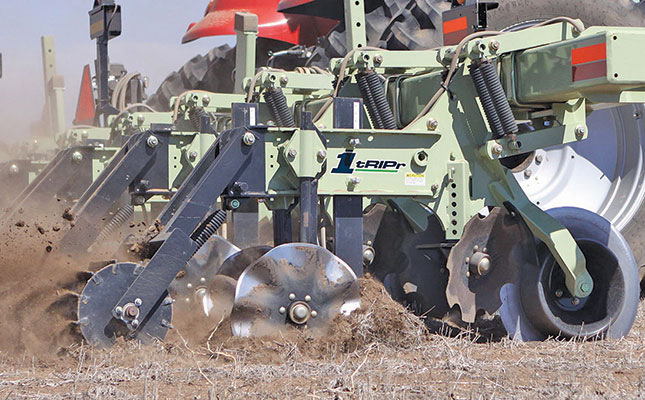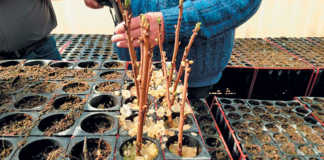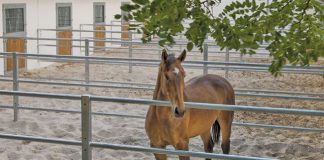
Photo: Supplied
Many years of research by world-leading precision strip-till agriculture machinery manufacturer Orthman has delivered strong evidence to suggest that broadcasting of dry, granular fertiliser, specifically phosphorus (P) and potassium (K) products, does not deliver optimal results.
In fact, according to the company, broadcasting these products is little different to tossing money into the wind.
Michael Petersen, lead agronomist at Orthman, is a soil scientist with 45 years’ experience in the field, and has worked in several parts of South Africa and in 10 other countries.
He has seen, measured and rode on combine harvesters to monitor the results of placing dry fertiliser products precisely in the pathway of the crop’s root system.
The results, he says, are certainly worth the expense of obtaining the distribution equipment and metering system for pre-planting tillage and fertilisation.
High cost of fertiliser
It is unlikely that fertiliser prices will decline in future. In fact, the supply worldwide seems to be dwindling fast. This is at a time when agricultural production is increasing both in area and intensity.
In other words, the demand for fertiliser will only rise, most likely resulting in further price increases.
Between 95% and 98% of the nutritional requirement for a plant to survive, grow and reproduce is collected by the roots. For many years, soil scientists and agronomists have known that P and K do not translocate much in the soil medium. Phosphorus, for example, moves only 20mm to 40mm from where it is placed.
These two elements are vital for root growth, cellular division, and protein and sugar synthesis. When they are placed directly in line with the vertical growth of the roots, yield can be multiplied rapidly.
Put another way, for optimal yield, crop roots need to grow into the fertiliser, which will have been converted by hundreds of bacteria species, fungi and some amoeba into a more easily absorbable state.
Roots branch and grow into the depths of a soil profile driven by the force of gravity and the enabling environment created by vertical tillage.
In warm soil, from spring to summer, the roots extend deeper. At the same time, water dissolves dry fertiliser products into the soil solution.
Organic compounds from old roots, earthworm burrows, cracks and crevices along
subsoil ped faces, deep-burrowing cicadas and other factors all aid the downward movement of complex carbohydrates and nutrients such as nitrogen (N), P and K, and secondary elements such as sulphur (S), calcium (Ca) and magnesium (Mg).
This natural soil ecosystem can exist only with little or no disturbance. Reduced tillage, which disturbs only the root zone, enables optimal root development.
Accurate placement
With the Orthman 1tRIPr strip- tillage system and dry boot system behind the shank, an operator can achieve accurate and precise fertiliser placement due to the fact that each row unit on the toolbar tills at exactly the same depth.
Each unit is linked in parallel, as in a row crop planter, so that all units follow the contour, enabling the operator to place the nutrients accurately below the soil surface.
Maize farmers everywhere have long grappled with the question of where exactly to place fertiliser for maximum effectiveness. Due to the most biologically active part of the soil profile being in the upper 300mm, and specifically 150mm to 160mm below the soil surface, many soil scientists such as Petersen see this as the ‘sweet spot’. The main reasons for this are the following:
- At 25 to 45 days after emergence, demand for P, K and zinc (Zn), amongst others, climbs steeply, and at this stage, feeder roots are growing vigorously at that depth;
- This is the depth at which soil moisture is usually consistent during spring;
- Soil temperature is a key factor in biological life and in the conversion of dry or liquid products into forms usable by roots. The steady temperature at this depth is ideal for fungi and soil bacteria and unlocks access to nutrients.
Maize roots favour a soil temperature of between 11°C and 18°C, and the dominant microbes are most active between 17°C and 27°C. However, some remain active until 48°C.
Thus, when agronomists and soil scientists advocate placing elements such as P, K, S and Zn at 150mm to 160mm, these will be right where the roots will “run smack right into them”, according to Petersen.
As a result, the nutrients become more effective, and a higher percentage of what the farmer bought and applied will be used by the target crop rather than the weeds.
Local assembly
With more South African farmers starting to appreciate the value of strip-tillage, and the growing interest in this method of zone tilling in a range of strip widths (220mm to 250mm) and row widths (0,76m to 1m), Orthman set up a local assembly facility in South Africa in 2015.
This has ensured optimal support and guidance in a concept that may be new to many South African farmers.
Stehan Cloete, a mechanical engineer, is the director of AgTech Africa. Email him at [email protected].










